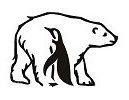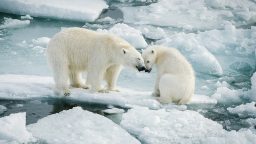The Arctic is a unique territory, almost untouched by man. It seems to be a lifeless icy desert, but thanks to the eternal cold and the isolation of the ecosystem, animal species that are not found anywhere else in the world have been preserved here. Not only polar bears live here, but also many animals. They all share the ability to withstand low temperatures all year round and survive in the most extreme conditions.
Killer Whale
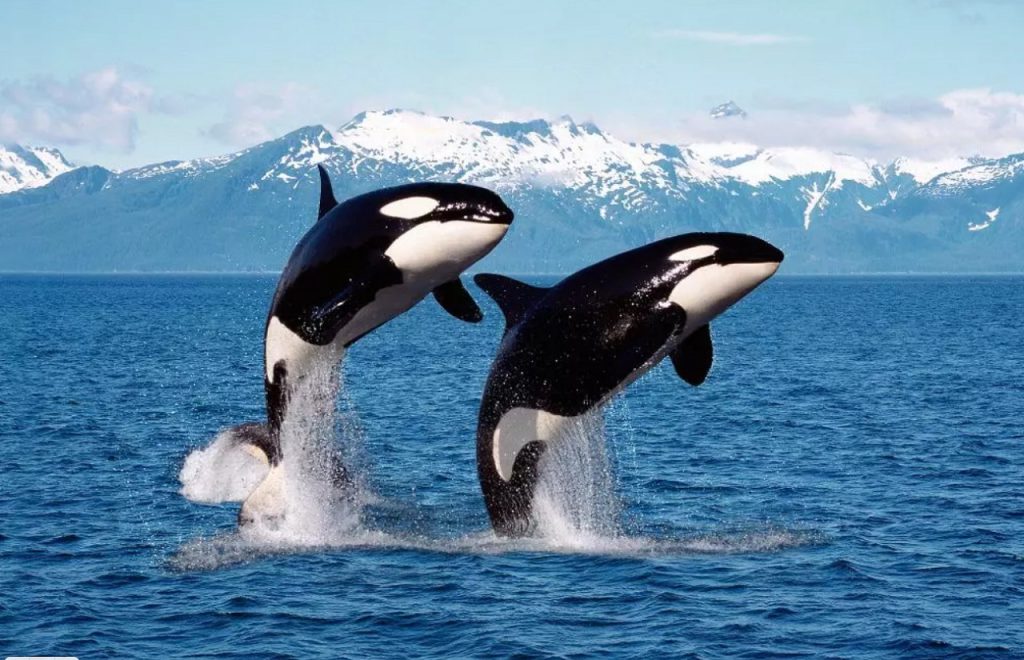
The killer whale is the largest dolphin in the world. The bright black and white color makes it very noticeable among the waves of the Arctic. At the same time, absolutely black and completely white killer whales are found in nature.
The Russian name “killer whale” presumably appeared because of the shape of the dolphin’s dorsal fin, which resembles a scythe. You can even use it to determine which kind of killer whale is in front of you. The rounded shape of the fin in more peaceful, fish-eating dolphins. Sharp fins are usually found in aggressive, carnivorous animals.
Killer whales use spectacular techniques in hunting. For example, they are thrown ashore after seals or swim under an ice floe on which a seal is hiding and hit it with their nose to split it.
Killer whales reach 10 meters in length and weigh up to 8 tons. Animals can eat up to 100 kilograms of food per day.
Killer whales have a matriarchy. The family group and the pack are managed by the eldest female, the “grandmother”, followed by the next oldest mothers and daughters. Males can leave the group for mating, but then return: the mother is more important than the partner.
Beluga whales
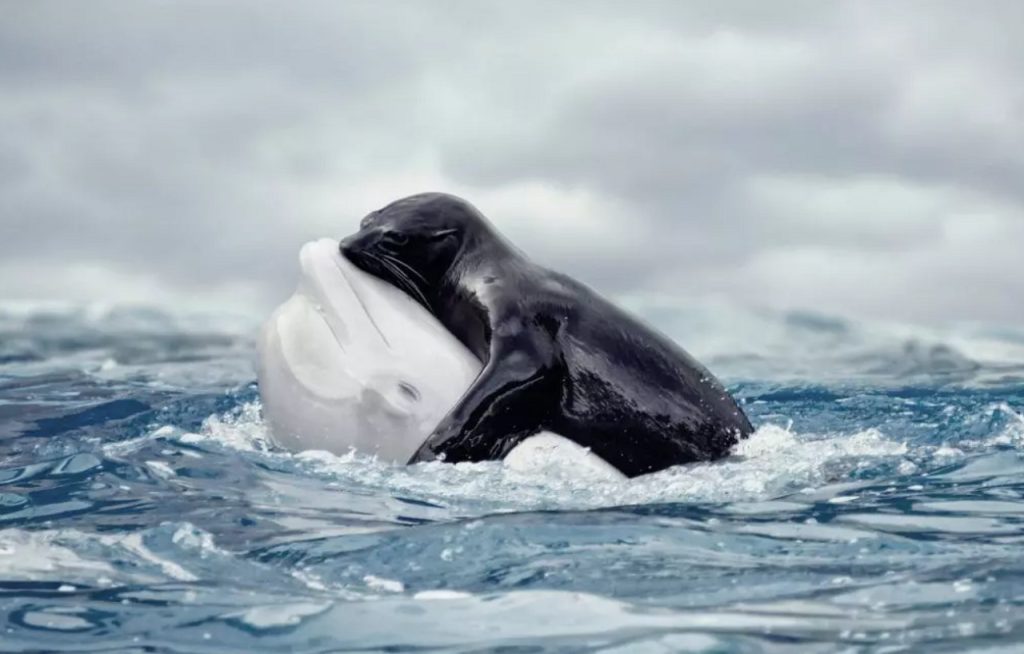
Belugas are very playful, enjoy contact with people and live only in clean waters. In spring and summer, animals approach the shore and river mouths where fish spawn. In winter, they go further out to sea and live between the ice.
In Russia, belugas are found along the coasts of the Okhotsk and Bering Seas, near the island of Vaigach and the Novaya Zemlya archipelago. The stable condition of the beluga whale population is an indicator of good ecology.
Belugas, like other whales, have a complex “speech” and are able to emit up to 50 sound signals. Environmentalists note that belugas either hear very poorly or do not distinguish the human voice at all.
The length of the beluga whale reaches 6 meters, and the weight is two tons. The thickness of the skin reaches two centimeters, under it there is a thick layer of fat, about 15 centimeters. This layer reliably protects animals from the Arctic cold.
The beluga whale can reach speeds of up to 25 kilometers per hour, descend to a depth of 300 meters and stay without air for 15 minutes. Beluga whales’ favorite food is saika, small polar cod. Animals also enjoy eating herring, navaga, whitefish and marine crustaceans.
Female beluga whales bear cubs for 14 months. Babies are born in early summer. In newborns, the skin is dark blue, almost black, over time it turns pale and first acquires a gray-blue shade, then a white color.
Walrus
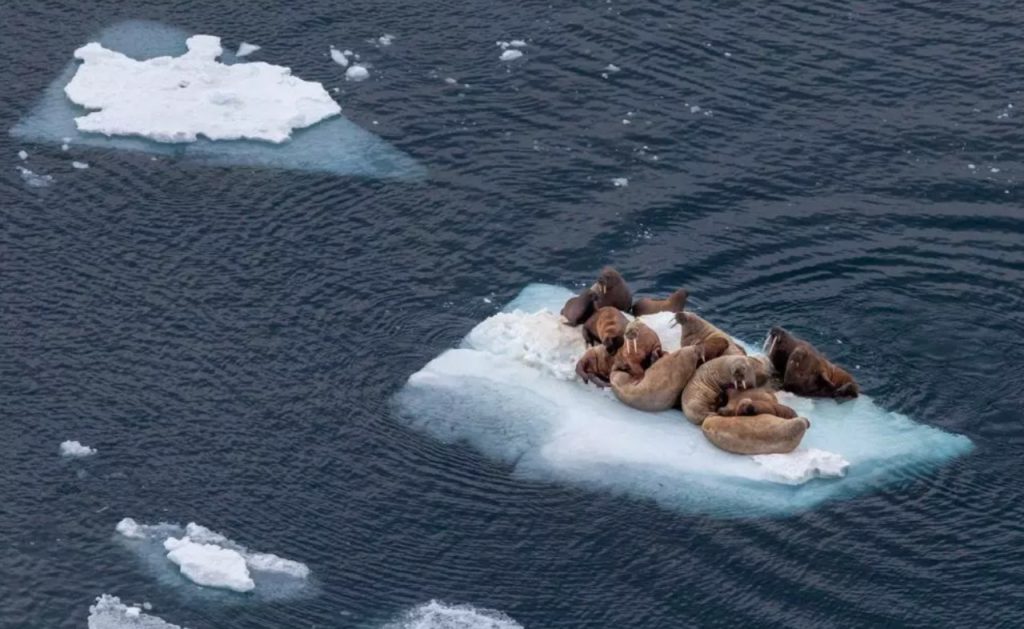
The walrus is one of the largest animals in the pinniped group. The body length reaches up to three meters. The weight of an adult male is about a ton, and a newborn walrus weighs 45 kilograms.
The walrus is a predator. His diet includes shellfish, shrimps, lobsters, octopuses, and sometimes fish. For food, the animal can dive to a depth of 180 meters.
Powerful walrus tusks are a versatile tool. Animals use them for fights, protection from predators, and even as a lever to pull a ton of their weight onto the ice. Walruses hunt with the help of vibrissae — thick whiskers that probe the seabed.
From January to April, male walruses begin to sing to attract females. They have different sounds in their arsenal: bells, guitar strumming and drumming. If the walrus appreciates the manner of performance, then after 15 months she will give birth to a cub, which she will feed with milk for 2 years.
Walruses are almost at the top of the food chain, only polar bears and killer whales are higher. Therefore, changes in the number of walruses can be used to monitor the environmental situation as a whole.
The Sea Hare
The Sami called this type of seal lakhtak, from the Sami “fat”. And the Russians are a sea hare for their timidity and habit of jumping on land. The sea hare lives everywhere in the Arctic, but especially loves shallow water. Lakhtak is comfortable among the drifting ice.
This is one of the largest seals. It reaches a length of three meters. The maximum weight is about 300 kilograms. The color is brown-olive or black-gray. The mating season of sea hares lasts from March to June. At this time, males “sing” to attract the attention of females. A person perceives this sound as a whistle.
The female bears a cub for 11 months. The sea hare reaches 1.5 meters in length and weighs about 30 kilograms. A few hours after birth, he is already able to swim. The sea hare loves invertebrates most of all: shrimps, crabs and shellfish. But he also eats a lot of Atlantic cod — saiki. For food, he dives to a depth of 100 meters.
By Herman Kostrinski
More amazing facts about the Arctic can be read here.
